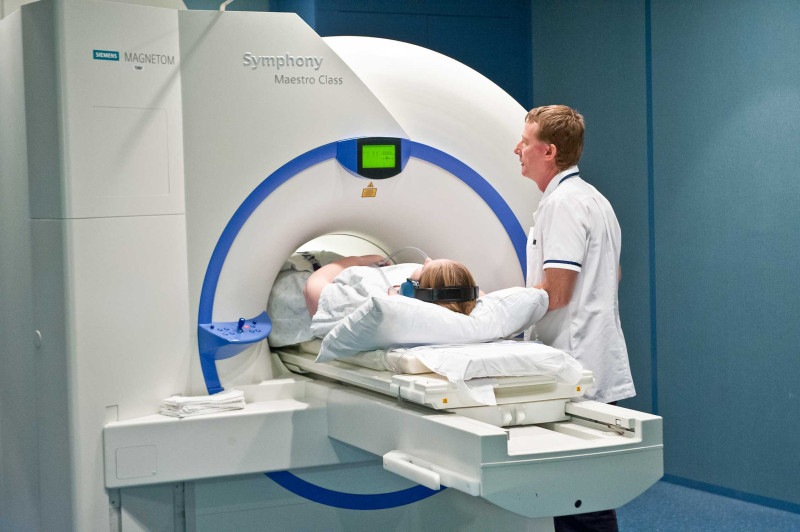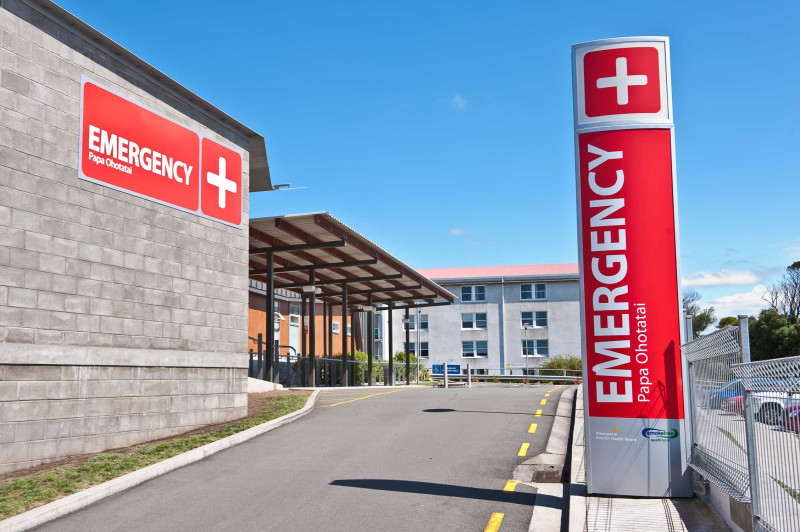Jane’s story – the unseen impact of developing an infection after surgery
Jane (not her real name) shares her personal story of developing a healthcare-associated infection to highlight the impact of these on patients and their whānau.
Recovering from major surgery is challenging, and an additional complication makes things harder.
Healthcare-associated infections, or infections that arise from a hospital stay, are relatively common and in many cases preventable. A recent nationwide survey in public hospitals showed that 1 in 15 patients had a healthcare-associated infection, and a quarter of these infections were surgical site infections.

Jane had a scan which showed a post-operative infection.
Developing an infection after surgery was not expected
Two weeks after having laparoscopic surgery for a long-standing painful health condition, Jane was recovering well and feeling ready to start driving her young daughter to daycare again.
When she suddenly started to develop pain, Jane tried to ignore it. At that stage, she never thought it may have been due to an infection from the surgery. Jane had been told what to look out for immediately after the surgery but was not expecting an infection that much later.
‘The pain level started to go up instead of down, but I ignored that, because I wanted to be able to drive and we needed everything to be okay.’
However, the pain got much worse over the next 2 days, and Jane ended up having to go to hospital in an ambulance.
‘The pain level started to go up instead of down, but I ignored that, because I wanted to be able to drive …’
Once in the emergency department, Jane had blood tests and swabs taken, and a CT scan, which showed a post-operative infection. Jane was started on strong antibiotics and quickly admitted to a ward.
After several days in hospital, Jane had a specialised drainage of the infection under radiology. This was a very difficult part of the journey for Jane. Several days later, the infection started to get better, and Jane was able to go home on oral antibiotics.

The impact of developing an infection after surgery
Jane’s unexpected admission for an infection was disruptive to the whole family. At the hospital, Jane’s husband and daughter found the environment stressful, and it was difficult for them to see Jane so sick. Jane’s husband had to take extra time off work, and their young daughter was unsettled at home without mum.
‘The strain on my family was huge. [My] poor husband would have been really struggling. We needed me home, and he needed to be at work, and the whole thing was so much of a strain.’
Jane found the whole experience of an unplanned admission very different from her original admission. With the original surgery and recovery, Jane said she knew what to expect and could prepare for it.
‘The strain on my family was huge … We needed me home and (my husband) needed to be at work.’
‘When you have a planned surgery, you have the same doctor the whole way through, you know you have a say about what's going to happen to you and that's talked about before it happens. And for me, I knew where the horrible things were going to be, and I prepared myself for that.’
During her readmission, care was much less predictable, and Jane said that staff and plans changed from day to day and ‘everything was just all over the place.’
Once home, the whole experience of the second admission meant that Jane found her recovery was much harder and ‘more of a struggle’ than after her original surgery. The family weren’t prepared for Jane to be sick for so long, and both she and her husband ended up having to return to work before they were ready.
The importance of preventing healthcare-associated infections
Jane’s final message highlights the importance of preventing healthcare-associated infections:
‘Preventing [infections] is really important. The treatments are uncomfortable. It's painful. It's all sorts of things. It's not just some IV antibiotics, it has bigger impacts on people that can’t be seen from the hospital. There’s needing to get back to work, and there are financial impacts when you take someone out of their home, regardless of whether they're working. There’s also the impact on children in the household, and emotions around that, that resurface [for my daughter] every time I'm sick.’
‘Preventing [infections] is really important … it’s not just some IV antibiotics, it has bigger impacts on people that can’t be seen from the hospital.’
Jane hopes that sharing her story will raise awareness about the importance of preventing healthcare-associated infections and making sure people know to watch out for signs of infection after surgery.
